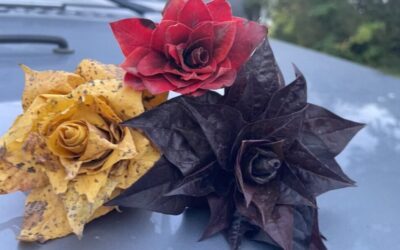by Lawrence Lannoo
Late in the 19th century John O. Bell and his family arrived on the Manitoba prairie from Cape Breton.
Bell, who had originally emigrated to Canada from Scotland, was looking for a piece of land on which he could establish a homestead.
The area he settled became known as “Bell Mount,” which provided land for the town of Belmont and was incorporated in 1889.
As explained by a visiting descendant of John O. Bell: “The name was shortened to ‘Belmont’ because it is a hill in the land.”
On September 29th of this year, that descendant – Bell’s great, great grandson David John Glass – made a journey of his own from Alberta to visit the site of his family’s homestead in Belmont.
“The land for the town site of Belmont was given by my great, great grandfather, John O. Bell,” Glass said in an interview. “He was known as ‘the grandfather’ around here.
“The land for the town is sitting on part of his original homestead.”
Glass described how he had planned for 40 years to come back to the town bearing his family’s name.
“For me, to come out to Belmont was very important to me because I wanted to come back to the place where it all started for my family,” he said. “There are still a few buildings here and in Baldur that were built by my family.”
Glass described how his family were drawn west late in the 19th century.
“They migrated out this way, coming along with the railroad as it was laid,” he said.
“People migrated to the west that way.”
He said his research into the family history included the discovery of a record from 1883 when John O. Bell was first homesteading in the area.
One fact unique to Glass’ family history is their relation to the man whose invention would eventually be integral to the lives of most people in the 21st Century: the creator of the telephone, Alexander Graham Bell.
As noted on the agbfoundation.ca website: “Alexander was many things: an inventor, an innovator, a visionary. And much of what he accomplished, he did so in Canada – in a beautiful rural location found in Baddeck, Nova Scotia, Canada. He spent most of the last thirty years of his life in Baddeck at his estate and research campus called Beinn Bhreagh. He and his wife Mabel rest peacefully there to this day.”
Alexander, who came from Scotland, was the cousin of David’s grandmother Mary Gertrude Bell, who eventually became Mary Gertrude Glass, David added.
Regarding the connection to America that is often emphasized when speaking of Alexander’s work, Glass explained the basis of the link.
“Alexander was working with American money,” Glass said, “because his wife was an American.
“His wife’s family were fairly well-heeled and provided a lot of support for his experiments.”
Glass said his family were farmers who grew cereal crops in the area.
“The old man, John O. Bell, who provided the land, was here in the early 1880s,” Glass said, “as was William Glass, who was married to my great grandmother, the daughter of John O. Bell.”
The entire family eventually moved to the Summerview district, east of Pincher Creek, Alberta.
Pincher Creek is located about 100 miles south of Calgary.
The family relocated there in 1904 and 1905, David added.
Glass, who turned age 65 this year, still lives in Pincher Creek, having served 33 years as a museum conservator and technician before retiring in 2015.
“The original place where William Glass and Mary Gertrude Bell settled is now a farm museum called ‘Heritage Acres,’” Glass said. “I live five miles from that site.”
He travelled to Belmont in his 1972 Fargo Motorhome, which he acquired just three weeks before starting the trip.
That motorhome, with an odometer reading of only 56,000 miles, was to be his transportation across Canada from Pincher Creek to Ontario where he was planning a family and friend visit.
He admitted, due to physical challenges, this would likely be his last road trip.
“I have had a good working life, and I am still involved with history and still very much a volunteer at museums where I worked,” he said.
“It doesn’t matter as long as you still have something to offer.”

View the PDF file of the paper under Online Edition. Subscribe to the online edition for $55.00 per year. Go to the “member signup” to start the process.





